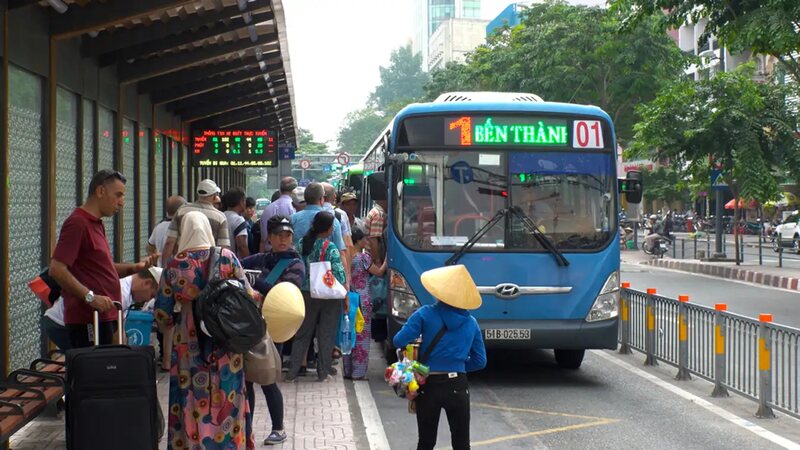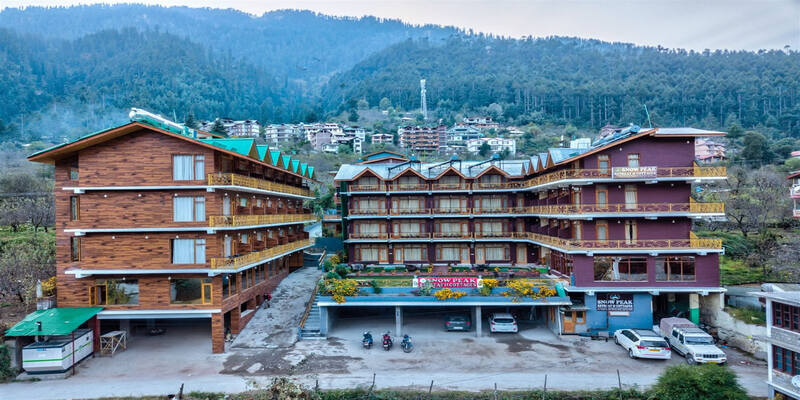Ho Chi Minh City, also called Saigon in the past, gives a lively blend of olden times, traditional values, and contemporary aspects. Its busy roads are packed with important places, local markets, and special experiences. Being able to move around this energetic city well is very important for enjoying everything it provides. This guide offers information on the important highlights, useful tips for transportation, and ideas for activities to do in Ho Chi Minh City.
Understanding the City Layout
In Ho Chi Minh City, there are many districts with their unique character and attractions. District 1 is the main area, where you can visit places like Ben Thanh Market, the War Remnants Museum, and Notre-Dame Cathedral Basilica. District 3 is famous for its French colonial architecture and the Jade Emperor Pagoda. Sometimes, the design of the city can be intricate so knowing about the districts and how they link up will assist you in getting around better.
- Navigational Aids: Consider using a map app or GPS to help with the city's intricate street layout.
- Local Advice: Asking locals for directions can provide quicker routes and insights into the citys layout.
Modes of Transportation

In Ho Chi Minh City, you have many options for transportation. The most usual and handy method is using motorbikes, which are flexible and fast. People often use ride-hailing apps such as Grab to book motorbike taxis or cars. These applications are liked by both local people and visitors because they make it simple to find transport. Buses for public use exist, yet they may not always be the most suitable option for tourists who do not know the routes well. Taxis are also common and can work better for longer travels or to far-off districts.
- Traffic Considerations: Ho Chi Minh City traffic can be chaotic; motorbike rides require cautious navigation.
- Safety Tips: Always verify taxi fares before starting your ride to avoid misunderstandings.
Exploring Historical Sites
The city has many historical places that show its deep history. The Museum gives a serious view of Vietnam's past during wartime. If you go a little outside from city, Cu Chi Tunnels are there to give an interesting understanding of how guerilla fights happened. The Reunification Palace is also a necessary visit, as its interiors have been kept in good condition and it gives you an understanding of the country's history. Every site offers another viewpoint on Vietnam's past and should be part of your schedule.
- Visit Timing: Early mornings or late afternoons are often less crowded at historical sites.
- Dress Code: Some sites may require modest dress; its advisable to dress respectfully when visiting historical locations.
Experiencing Local Markets
Markets are the heart of everyday life and tradition in Ho Chi Minh City. Ben Thanh Market, known by all, has a large variety of goods from gifts to local food. For a more authentic feeling, you can visit Cholon, the Chinatown area where many markets and street foods are located. These markets are not only for buying things, but they also allow visitors to experience the lively environment of the city and talk with sellers from this area.
- Bargaining Tips: Haggling is common in local markets, so dont hesitate to negotiate prices.
- Cash Advice: Carry cash as many vendors may not accept credit cards.
Visiting Cultural and Religious Sites
In Ho Chi Minh City, you can find a lot of cultural and religious places that are worth seeing. The Jade Emperor Pagoda is situated in District 1 and it's an impressive display of traditional Vietnamese style with its peaceful ambiance making for a great escape from the busy streets. The Notre Dame Cathedral Basilica, which was constructed when Vietnam was part of a French colony, is also an architectural wonder. Also, the Thien Hau Temple located in Cholon is devoted to the goddess of the sea and serves as a center for the Chinese community there.
- Photography Rules: Be mindful of photography restrictions in religious sites; always ask before taking photos.
- Respectful Behavior: Maintain a respectful demeanor and dress modestly when visiting cultural and religious sites.
Enjoying Nightlife and Entertainment

At night, the city comes alive with a variety of experiences. You can visit Bui Vien Street in District 1, which is known for its energetic night events. It has many street food stalls. If you want to enjoy a peaceful evening view, try going up to one of the rooftop cafe that give you panoramic sightseeing over Ho Chi Minh City. You can also find cultural shows, like traditional Vietnamese music and dancing events. These give a glimpse into the arts of the area.
- Safety: Always keep an eye on your belongings and be cautious in crowded places.
- Local Recommendations: Ask locals or hotel staff for recommendations on the best places for nightlife and entertainment.
Dining and Culinary Experiences
Ho Chi Minh City has so many places to eat, from small food stands on the street to fancy restaurants. You should try some pho, which is a well-known noodle soup from Vietnam. There are lots of street vendors with this dish all over the city. If you want something more complete for your mealtime experience in Vietnam, find local favorites such as banh mi (Vietnamese sandwiches) and fresh spring rolls. The city's food scene is a mirror of its diverse culture, making it an unavoidable part of any trip.
- Food Safety: Choose busy food stalls with high turnover for fresher and safer food.
- Local Delicacies: Dont miss trying local delicacies like banh xeo (Vietnamese pancakes) and che (Vietnamese dessert soups).
Conclusion
Traveling around Ho Chi Minh City and discovering its attractions can be a rewarding experience if you plan correctly. Understanding the city's structure, selecting appropriate transportation methods, and knowing where to go for history, culture, or food are all key aspects that will assist in maximizing your time spent here.











